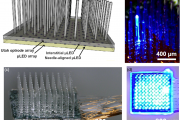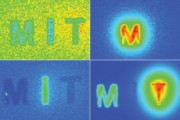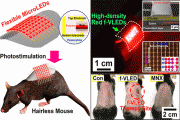 2019-09-06
2019-09-06
A research team formed by specialists in photonics, electrical and computer engineering and medicine jointly developed a device which integrated a 10x10 array of glass microneedles with Micro LED to deliver light for stimulating neurons in brains of mammals.
Researchers from the University of Strathclyde, University of Utah and Fienstein Institute for Medical Research aim to advance optogenetic studies by connecting neural activities to specific cognitive functions in large mammals.
In the study, the researchers combined a glass microneedle array with a custom fabricated...
Continue reading →
 2019-04-09
2019-04-09
To detect cancer at early stage is critical for treatment. In order to spot tumors before they become too big to cure, researchers at Massachusetts Institute of Technology (MIT) developed an optical imaging system using near-infrared light to spot tiny tumors.
The MIT research team noted that near-infrared light with wavelengths from 900 to 1700 nanometers, is suitable to tissue imaging because light with longer wavelengths does not scatter as much as when it strikes objects, allowing the light to penetrate deeper into the tissue. Using the advantage of near-infrared light, r...
Continue reading →
 2019-04-09
2019-04-09
The love-hate relationship between human and blue light becomes more complicated with a new research published by researchers at Purdue University and Boston University. They discovered that blue light exposure can kill Methicillin-resistant Staphylococcus aureus (MRSA), a bacterium that causes infection in various parts of the body and is called “superbug.”
(image: Pixabay)
According to the new research, published on March 30, 2019 on Advanced Science, researchers found that exposing MRSA to blue light can render it defenseless against antiseptics as m...
Continue reading →
 2018-09-13
2018-09-13
Regrowing hair for mice is the new application unveiled by researchers from the Korea Advanced Institute of Science and Technology (KAIST) with their red flexible vertical Micro LED technology. They published their result in ACS Nano in August.
Continue reading →
 2019-09-06
2019-09-06
 2019-04-09
2019-04-09
 2019-04-09
2019-04-09
 2018-09-13
2018-09-13